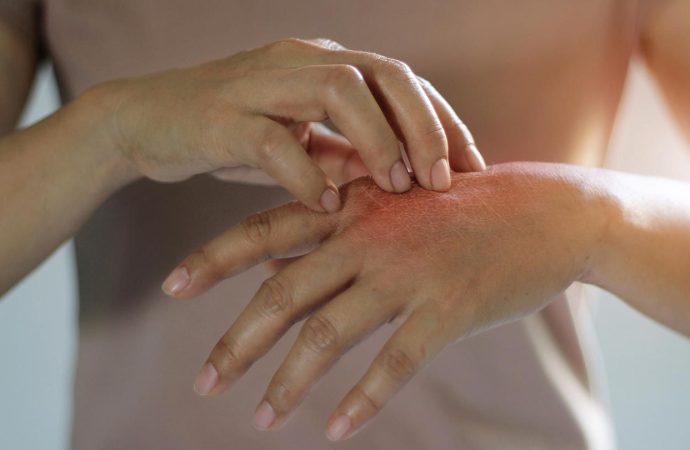Introduction Skin, the body’s largest organ, is not only a protective barrier but also a canvas of health. When skin diseases strike, they can impact not just our appearance but also our well-being. Understanding how skin diseases are diagnosed and treated is crucial for effective management and recovery. In this comprehensive guide, we delve deep
Introduction
Skin, the body’s largest organ, is not only a protective barrier but also a canvas of health. When skin diseases strike, they can impact not just our appearance but also our well-being. Understanding how skin diseases are diagnosed and treated is crucial for effective management and recovery. In this comprehensive guide, we delve deep into the world of diagnosing and treating skin diseases, providing you with essential knowledge to navigate the complexities of various skin conditions. Let’s embark on a journey to understand the diagnostic process and the latest treatment options for skin diseases.
Understanding Skin Structure
Before we dive into the diagnostic and treatment aspects, let’s establish a foundation by understanding the intricate structure of the skin:
1. Layers of the Skin
The skin consists of three primary layers, each with distinct functions:
- Epidermis: The outermost layer, serving as a protective barrier.
- Dermis: The middle layer containing hair follicles, sweat glands, and blood vessels.
- Subcutaneous Tissue: The innermost layer housing fat cells, providing insulation and cushioning.
Diagnostic Process for Skin Diseases
Diagnosing skin diseases often involves a systematic approach that considers various factors:
1. Clinical Examination
A dermatologist or healthcare provider will conduct a visual examination of the affected skin, looking for specific signs and symptoms.
2. Medical History
A thorough review of the patient’s medical history, including family history, helps in identifying potential genetic factors or triggers.
3. Skin Biopsy
In some cases, a small sample of affected skin may be taken for laboratory analysis to confirm the diagnosis.
4. Allergy Testing
For conditions related to allergies or contact dermatitis, allergy testing may be recommended to identify specific allergens.

Image by: https://plymouthmeetingdermatology.com/
Latest Treatment Options for Skin Diseases
Advancements in medical science have led to a range of treatment options for various skin diseases:
1. Topical Treatments
- Topical Corticosteroids: Used to reduce inflammation and itching in conditions like eczema and psoriasis.
- Retinoids: Help unclog pores and promote skin cell turnover, often used for acne treatment.
- Topical Antibiotics: Combat bacterial infections associated with skin conditions like acne.
2. Systemic Medications
- Antifungal Medications: Treat fungal infections like ringworm or athlete’s foot.
- Immunosuppressants: Used for severe cases of autoimmune skin diseases like psoriasis.
- Biologic Drugs: Target specific immune responses in conditions like psoriasis or eczema.
3. Light and Laser Therapy
- Phototherapy: Uses UVB or UVA light to treat conditions like psoriasis or vitiligo.
- Laser Therapy: Effective for various skin issues, including tattoo removal and scar reduction.
4. Surgical Procedures
- Skin Cancer Surgery: Removes cancerous tissue while preserving healthy skin.
- Mohs Surgery: A specialized technique for removing skin cancer layer by layer.
- Cosmetic Procedures: Includes treatments like dermabrasion, chemical peels, and botox injections.
Prevention and Skin Care
Preventing skin diseases is as crucial as treating them. Here are some preventive measures and general skin care tips:
- Sun Protection: Use sunscreen with SPF, wear protective clothing, and avoid excessive sun exposure.
- Hydration: Keep your skin hydrated by drinking plenty of water.
- Healthy Diet: Consume a balanced diet rich in antioxidants, vitamins, and minerals.
- Stress Management: Practice stress-reduction techniques like meditation or yoga.
- Proper Hygiene: Maintain good hygiene, use gentle skincare products, and avoid harsh chemicals.
Conclusion
Congratulations! You’ve delved into the world of diagnosing and treating skin diseases, gaining insights into the diagnostic process and the latest treatment options. Skin health plays a vital role in our overall well-being, and this guide equips you with essential knowledge to address and manage various skin conditions effectively.
In this comprehensive guide, we’ve explored the layers of the skin, the diagnostic process, and the latest treatment options for skin diseases. Additionally, we’ve provided preventive measures and skin care tips to help you maintain healthy and vibrant skin.
As you continue your journey toward better skin health, remember that early diagnosis, personalized treatment plans, and preventive measures are key to managing and preventing skin diseases. Prioritize your skin health, and it will reward you with a healthier, more radiant appearance and an improved quality of life.

















Leave a Comment
Your email address will not be published. Required fields are marked with *